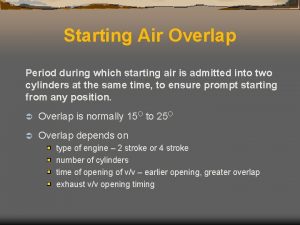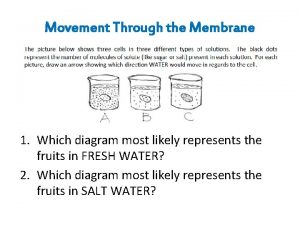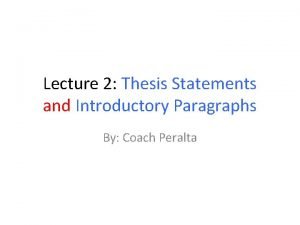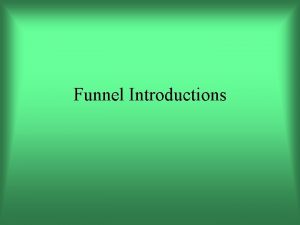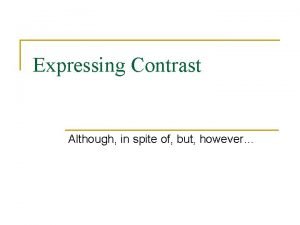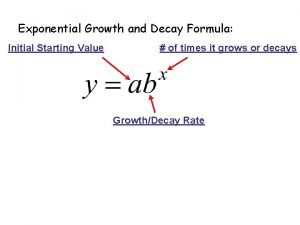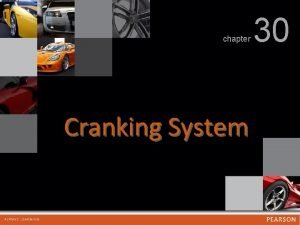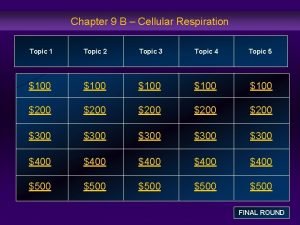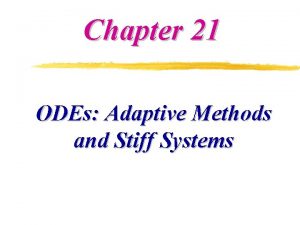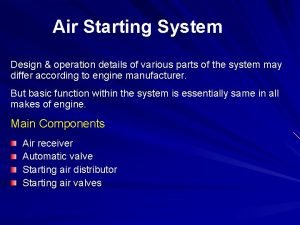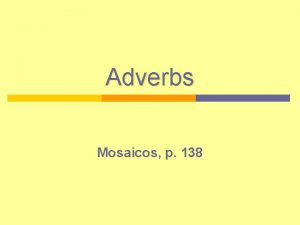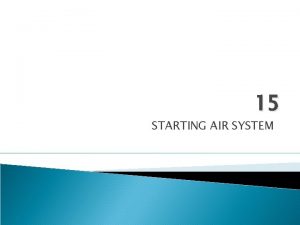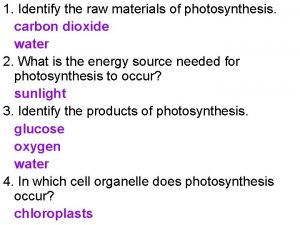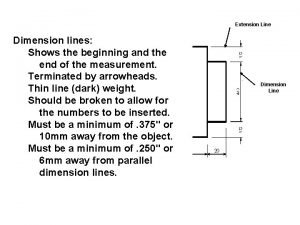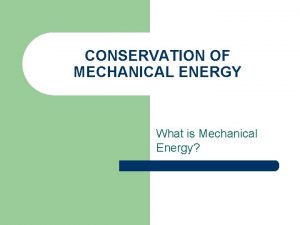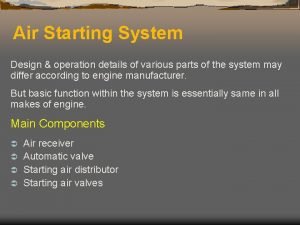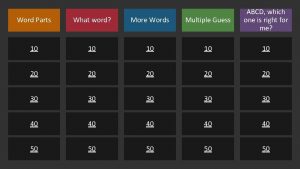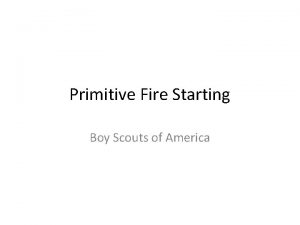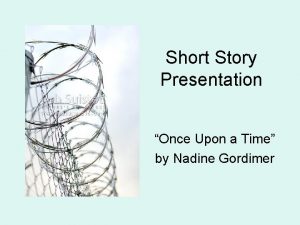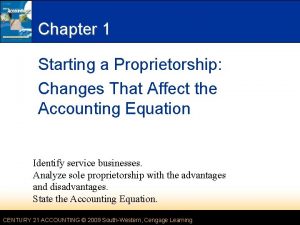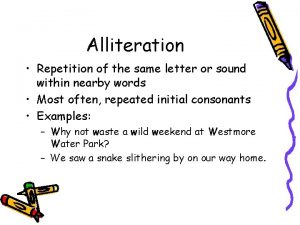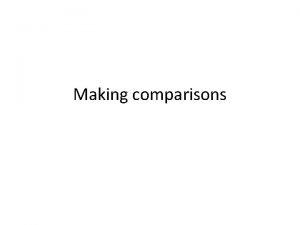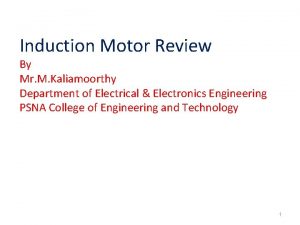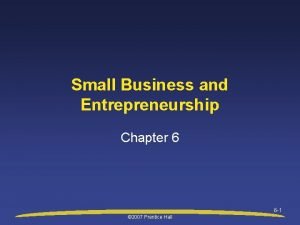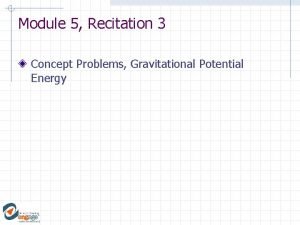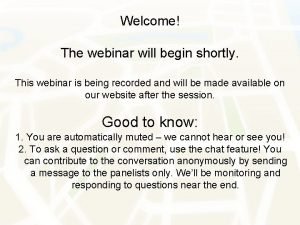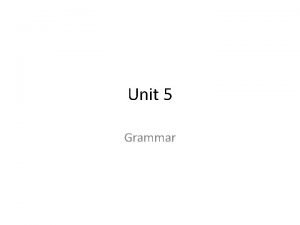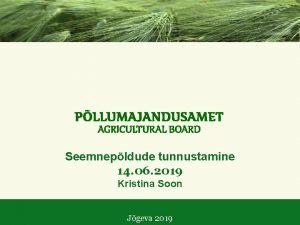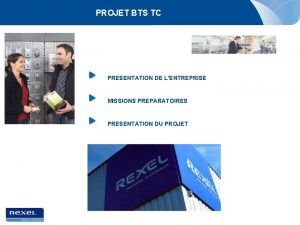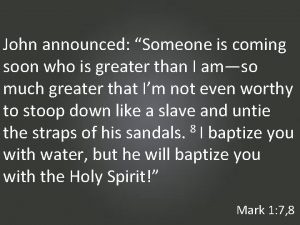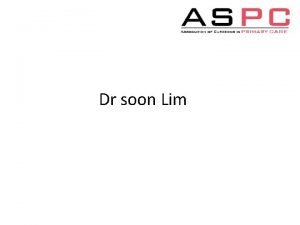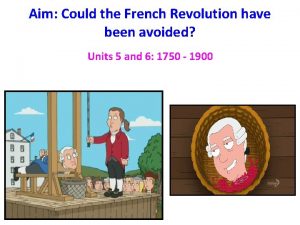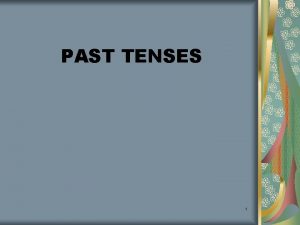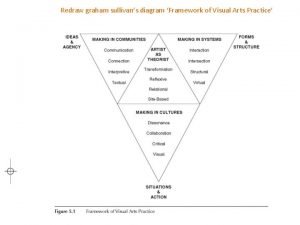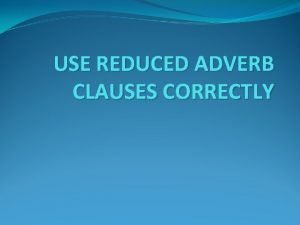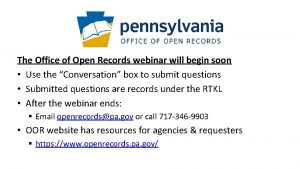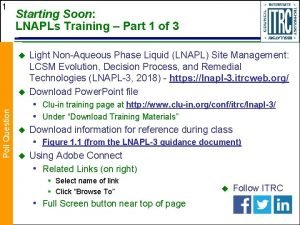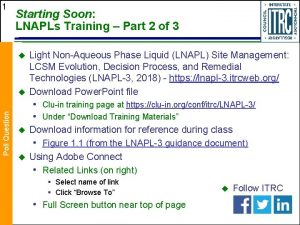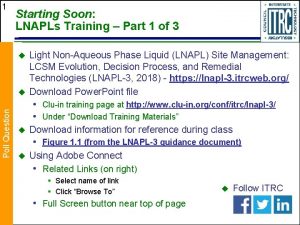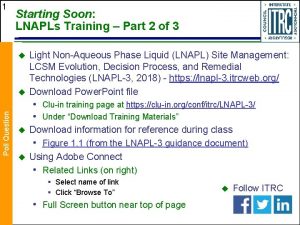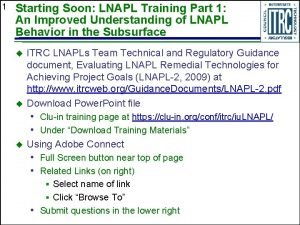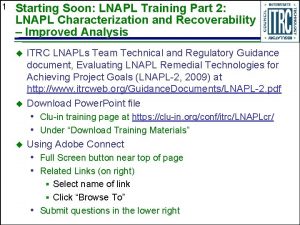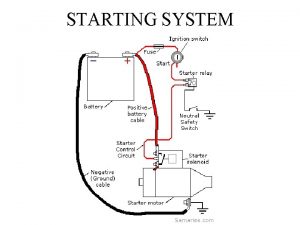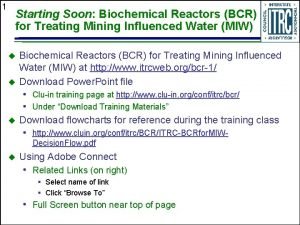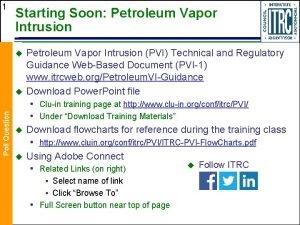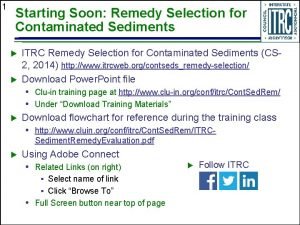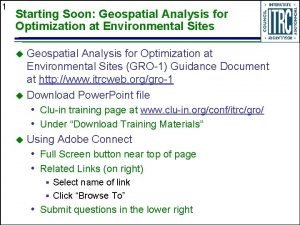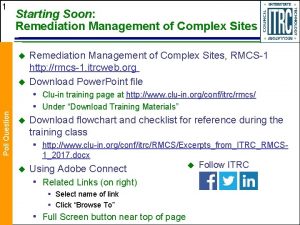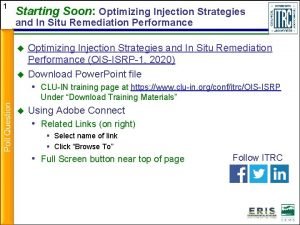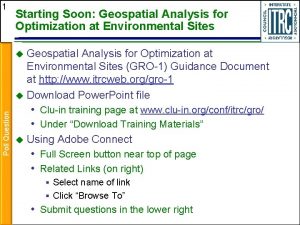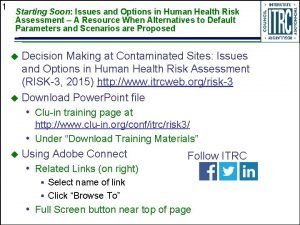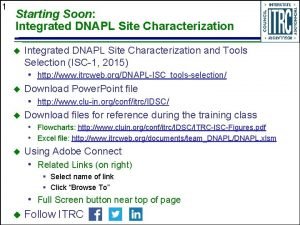1 Starting Soon LNAPLs Training Part 1 of


































































































- Slides: 98

1 Starting Soon: LNAPLs Training – Part 1 of 3 u Poll Question u u u Light Non-Aqueous Phase Liquid (LNAPL) Site Management: LCSM Evolution, Decision Process, and Remedial Technologies (LNAPL-3, 2018) - https: //lnapl-3. itrcweb. org/ Download Power. Point file • Clu-in training page at http: //www. clu-in. org/conf/itrc/lnapl-3/ • Under “Download Training Materials” Download information for reference during class • Figure 1. 1 (from the LNAPL-3 guidance document) Using Adobe Connect • Related Links (on right) § Select name of link § Click “Browse To” • Full Screen button near top of page u Follow ITRC

2 Welcome – Thanks for Joining this ITRC Training Class Based on ITRC Guidance Document: Light Non-Aqueous Phase Liquid (LNAPL) Site Management: LCSM Evolution, Decision Process, and Remedial Technologies (LNAPL-3, 2018) 3 -Part Training Series: Connecting the Science to Managing Sites Part 1: Understanding LNAPL Behavior in the Subsurface Part 2: LNAPL Conceptual Site Models and the LNAPL Decision Process Part 3: Using LNAPL Science, the LCSM, and LNAPL Goals to Select an LNAPL Remedial Technology Sponsored by: Interstate Technology and Regulatory Council (www. itrcweb. org) Hosted by: USEPA Clean Up Information Network (www. cluin. org)

3 Housekeeping Course time is 2¼ hours u This event is being recorded u Trainers control slides • Want to control your u own slides? You can download presentation file on Clu-in training page u Questions and feedback • Throughout training: type in the “Q & A” box • At Q&A breaks: unmute your phone with #6 to ask out loud • At end of class: Feedback form available from last slide § Need confirmation of your participation today? Fill out the feedback form and check box for confirmation email and certificate Copyright 2019 Interstate Technology & Regulatory Council, 50 F Street, NW, Suite 350, Washington, DC 20001

4 ITRC (www. itrcweb. org) – Shaping the Future of Regulatory Acceptance u u u Host organization Network • State regulators Disclaimer • Full version in “Notes” section • Partially funded by the U. S. government § All 50 states, PR, DC § ITRC nor US government • Federal partners warranty material § ITRC nor US government DOE DOD • ITRC Industry Affiliates Program • Academia • Community stakeholders u Follow ITRC endorse specific products EPA u ITRC materials available for your use – see usage policy u Available from www. itrcweb. org • Technical and regulatory guidance documents • Online and classroom training schedule • More…

5 Meet the ITRC LNAPL Trainers – Part 1 Randy Chapman Virginia Department of Environmental Quality Woodbridge, Virginia 703 -583 -3816 randy. chapman @deq. virginia. gov Natasha Sihota Chevron Energy Technology Company San Ramon, California 925 -842 -5458 NSihota@chevron. com Eric Nichols Substrata LLC Newfields, New Hampshire 603 -770 -6577 eric@substrata. us. com Read trainer bios at https: //clu-in. org/conf/itrc/LNAPL-3/

6 Our Focus is on LNAPL (Light Non-Aqueous Phase Liquid) u What is LNAPL? u Why Do We Care About LNAPL? • LNAPL Concerns • LNAPL can be difficult to accurately assess or recover u Use LNAPL science to your advantage and apply at your sites

7 ITRC LNAPL document used or planned use at sites (reports by all environmental sectors) ITRC LNAPLs guidance used or referenced in the development of current or draft state guidance Connecting LNAPL Science to Regulation

8 Influencing State Management of LNAPL Sites Examples: ITRC LNAPLs guidance used or referenced in the development of current or draft state guidance u Virginia Department of Environmental Quality references ITRC LNAPL guidance documents in its Storage Tank Program’s Closure Evaluation of Sites with Free Product (DEQ Guidance Document #LPR-SRR-03 -2012, December 28, 2012) u Colorado Department of Labor and Employment Division of Oil and Public Safety revised its guidance to incorporate concepts from ITRC training courses and guidance documents. http: //www. coworkforce. gov/petroleumguidance/ VA CO

9 ITRC’s History as LNAPL Solution Provider § 2009: LNAPL-1 (Natural Source Zone Depletion) and LNAPL-2 (Evaluating LNAPL Remedial Technologies) § 2010 - 2017: • LNAPL Online Training (3 -parts) • LNAPL Classroom Training • Over 19, 000 Trained § 2016 - 2018: ITRC LNAPL Update § March 2018: LNAPL-3 (LNAPL Site Management: LCSM Evolution, Decision Process, and Remedial Technologies) § Spring 2018: Updated 3 -Part LNAPL Online Training

10 Your Online LNAPL Resource https: //lnapl-3. itrcweb. org/ u u Expansion of LNAPL Key Concepts Development of a LNAPL Conceptual Site Model (LCSM) Section Emphasis on identifying SMART objectives Expansion of Transmissivity (Tn) and Natural Source Zone Depletion (NSZD) via Appendices

11 Who Should Use This Document? State and federal regulators in CERCLA, RCRA, UST, voluntary programs u Remediation groups within integrated petroleum and services companies u Environmental consulting firms, suppliers, and vendors supporting LNAPL site management u Universities and colleges professors / college students in the environmental field u

12 Where Does This ITRC LNAPL Document Apply? All Types of Petroleum Contaminated Sites From large terminals or bulk storage facilities to your “mom and pop” corner gas station The SCIENCE is the same.

13 Learning Objectives 3 -Part Training Series Part 1 u Use LNAPL science to your advantage and apply at your sites u Develop LNAPL Conceptual Site Model (LCSM) for LNAPL concern identification u Inform stakeholders about the decision-making process u Select remedial technologies to achieve objectives u Prepare for transition between LNAPL strategies or technologies as the site moves through investigation, cleanup, and beyond u “SMART”-ly measure progress toward an identified technologyspecific endpoint Part 2 Part 3

14 ITRC 3 -Part Online Training Leads to YOUR Action TODAY Part 1: Part 2: Part 3: YOU Connect Science to LNAPL Site Management Build Your LNAPL Conceptual Site Model Select / Implement LNAPL Remedies (Section 3) (Sections 4 and 5) (Section 6) Apply knowledge at your LNAPL sites Based on the ITRC LNAPL-3 Document: LNAPL Site Management: LCSM Evolution, Decision Process, and Remedial Technologies

15 LNAPL Remediation Process and Evolution of the LCSM – Related to the Training Courses Handout provided Covered in Part 1 Figure 1 -1 – ITRC LNAPL-3

16 Key Messages 1. LNAPL in wells does not mean 100% LNAPL saturation (dispel “pancake model”) 2. LNAPL can be present in subsurface even if not in wells • Indicators 3. LNAPL Composition vs. LNAPL Saturation • Raoult’s Law 4. Apparent LNAPL Thickness Challenges in Unconfined Conditions • Amount changes with soil type • Thickness changes with water table position

17 Key Messages 5. Apparent LNAPL Thickness in various hydrogeologic conditions (i. e. , perched, confined) 6. LNAPL in well does not mean it is migrating • Darcy’s Law • Limiting processes 7. Transmissivity is a better indicator of recoverability 8. Stable LNAPL bodies can still result in sheens • Mechanisms 9. Biological processes are significant in LNAPL depletion

18 Key Message 1 Groundwater and LNAPL share pore space LNAPL in MWs 100% LNAPL Saturation in Formation

19 Time Series LNAPL Body Development: Cross Section View Time 3 Time 2 Time 4 LNAPL Saturation Anatomy of an LNAPL Body Time 1 Hi Lo LNAPL Hea d Soil pore resistanc Buoyancy

20 Lab Tank Experiment LNAPL Penetrates Below the Water Table Anatomy of an LNAPL Body Few mins after release 3 hours after release Sand Tank Frame LNAPL Penetrates Below the Water Table Photographs from Cristin Bruce

21 Impacts of LNAPL in the Formation: Key Messages Anatomy of an LNAPL Body u u LNAPL penetrates below the water table LNAPL saturation in the formation is not 100% and varies with depth • LNAPL shares the pore space with water Coming Next: How to determine LNAPL is there and how much Higher LNAPL saturation Water table Lower LNAPL saturation LNAPL Photograph from Andrew Kirkman Monitoring well Formation LNAPL vertical distribution in a lab tank

22 Nature of LNAPL Impacts in the Formation: Below Water Table And Saturation Varies Anatomy of an LNAPL Body MW Pancake Model Not This…. Pancake Model …Nor This…. …But This

23 Key Message 2 LNAPL can be in the formation even when it is not accumulating in a well

24 Nature of LNAPL Impacts in the Formation: LNAPL May Not Even Flow Into A Well Anatomy of an LNAPL Body MW • How do you know that LNAPL is present? • How do you find out where it is?

25 Anatomy of an LNAPL Body It is All LNAPL! LNAPL present, but cannot flow into wells Csat Residual LNAPL can flow into wells Mobile Migrating Potential Composition Concerns Potential Sat Concerns

26 LNAPL Vertical Extent Can Be Greater Than In-Well LNAPL Thickness MW MW Depth (ft bgs) Indicator: In-well LNAPL Thickness Cross Section at an LNAPL site MW MW 0 5 10 15 20 25 0 1100 Distance (ft) Clays Silts Sands LNAPL observed in MWs LNAPL observed in the formation

27 Dissolved Phase Persistence Low High LEGEND LNAPL Indicator: Dissolved Phase If There Is a Persistent Groundwater Plume…. GW Conc ……there is an LNAPL source …………. . . it may/may not flow into a well

28 Effective Solubility Of Select Chemicals From Common LNAPL Mixtures Indicator: Dissolved Phase Effective solubility of each chemical in a mixture like gasoline is a function of Raoult’s Law S i = x i. S LNAPL Mixture Chemical * (mole fraction in the mixture) Sol of Typical Pure Mole frxn. in Chem. (S) Unweathered (mg/L) LNAPL (xi) Eff. Sol of Chem. (Si) (mg/L) Gasoline Benzene 1780 0. 005 - 0. 01 9 -18 Gasoline Toluene 535 0. 05 - 0. 10 27 - 54 Gasoline Xylene 167 0. 05 - 0. 10 8 - 17 Diesel Benzene 1780 0. 00005 0. 22 Diesel Toluene 535 0. 0005 0. 67 Calculator at http: //www. epa. gov/athens/learn 2 model/part-two/onsite/es. html

29 Groundwater Concentrations As An Indicator Of LNAPL Indicator: Dissolved Phase 0. 1% 1% 100% Conc. in groundwater (% of Effective Solubility) ? ? ? ? Yes Likelihood of LNAPL presence in vicinity of observed GW conc GW – groundwater, conc - concentration

30 Calculated Csat Values Indicator: Conventional Assessment • TPH in soil represents hydrocarbon present in soil gas, pore water, sorbed phase, and LNAPL • Csat indicates the concentration at which soil gas, pore water and sorbed phase are saturated with hydrocarbon TPH > Csat LNAPL Soil Type Csat (mg TPH/Kg Soil) Gasoline Medium to coarse sand 143 Gasoline Fine to medium sand 215 Gasoline Silt to fine sand 387 Middle Distillate* Fine to medium sand 9 Middle Distillate* Silt to fine sand 18 * approximate to Brost and De. Vaull, 2000. API Bulletin 9.

31 TPH Cautions Indicator: Conventional Assessment u u u Do not collect soil samples at predetermined intervals (e. g. , not each 5 feet) Collect soil samples based on field screening Ensure that TPH range is representative of the LNAPL type • Do not assess a diesel spill using TPH-G • If heavy hydrocarbons (e. g. , crude, >C 35) then use Oil & Grease method u Do not stop at the water table!

32 Inferring LNAPL from Soil TPH Concentrations MW-9 Indicator: Conventional Assessment MW-10 MW-2 MW-3 10 S. S. Flow MW-4 MW-7 1 MW-6 Maximum Soil TPH Concs (mg/Kg) 1 5 9300 2 13 24000 3 15 20000 4 1. 6 1700 5 3. 4 1500 6 0. 6 12 7 0. 35 10 8 0. 1 ND<0. 005 9 ND<0. 001 ND<0. 005 10 ND<0. 001 ND<0. 005 N MW-1 MW-5 MW Historical Benzene Concs (mg/L) MW-8 0. 1 100’ LNAPL present – MW-1, -2, -3,

20’ 30’ 40’ ND ND ND ND 3000 630 120 ND ND ND 24000 20000 9300 1500 ND ND 7000 3200 ND ND 53 ND ND Silty Sand MW-8 MW-5 MW-1 MW-3 MW-2 10’ Silty Sand Indicator: Conventional Assessment 0 MW-9 LNAPL Vertical Extent TPH-G Versus In-Well Thickness ft bgs 33

34 OVA and Other Field Observations Indicator: Conventional Assessment u Boring logs to characterize LNAPL source zone geometry • Lithology, water content, stain, odor, OVA readings jar test condensate u u Picture cheiron- Shake test Oleophyllic dyes for presence of LNAPL • Detection +/- 1000 ppm TPH

35 White light • All that fluoresces may not be LNAPL • Minerals, antifreeze, detergents, peat • All LNAPLs do not fluoresce Gasoline Jet A Diesel Bunker C Laser Induced Fluorescence UV light Indicator: Specialized Assessment Fluorescence of LNAPL Photographs: Courtesy of PTS Laboratory Core UV Photograph 10 inches

36 Pore Fluid Saturation Indicator: Specialized Assessment Correlating TPH & Sn www. ptslabs. com Sn = LNAPL saturation (unitless) ρb = dry soil bulk density (g/cm³) TPH = total petroleum hydrocarbons (mg/kg) ρn = NAPL density (g/cm³) n = porosity Dean Stark Extraction 10000 mg/Kg ~4 -5% (Parker et al. , 1994)

37 Key Message 3 LNAPL Saturation vs. Composition

38 Effective Solubility: Raoult’s Law LNAPL Indicator: Dissolved Phase Raoult’s Law S i = x i. S Xylene Octane 0. 2 Xylene 0. 8 Octane Si = Effective solubility S = Sol. of pure chem. 170 mg/L 0. 6 mg/L Dissolved phase 34 mg/L 0. 48 mg/L xi = Mole frxn. of chem. MWNAPL = wt frxn x MWchem Reasonable Simplification for BTEX: For gasoline: mole frxn. ~ wt. frxn For diesel: mole frxn ~ 2. 5 x wt frxn

39 A Mass Reduction vs. Composition Change Base case (No remediation) 50% LNAPL Reduction (Vertical) Strategy C 50% LNAPL Reduction (in flow direction) D 20% Reduction in LNAPL Satn. (e. g. , Hydraulic Recovery) E 80% Reduction in COC Concentration in LNAPL Relative COC Conc. B 1 C 0. 75 0. 5 B 0. 25 E 0. 25 0. 5 D 0. 75 Relative Time A 1

40 Impact of LNAPL Recovery – Little Benefit In Reducing Dissolved BTEX Concentration e ng a h Maximum Benzene Concentration, 2010 -2011 (µg/L) Strategy 100000 C o N 10000 1 ed o. M O R 2 100 R n tio c u O ed R n tio uc O ed 10 o. M 5 n tio uc ed o. M 4 R O o. M 3 n tio c u ed o. M 1000 n tio uc R O 1 Recovery may not have significant impacts 1 10 100000 KEY on reducing concentrations, or increasing POINTS Historical source attenuation rates 2001 -2011 Max. Benzene Concentration, 0, 1 (µg/L) Source: Mc. Hugh et al. , 2013

41 How to Change LNAPL Composition Dissolution Volatilization from LNAPL Pump & Treat Soil Vapor Ext. Air Sparge Volatilization from Water Air Sparge Biodegradation Compound Aerobic conditions Denitrifying conditions Benzene Toluene m-Xylene p-Xylene ++ ++ ++ + o-Xylene Ethylbenzene ++ ++ +/-1) +/- 1, 2, 4 -trimethylbenzene ++ Sulfatereducing conditions + + - Ironreducing conditions + + -

42 Knowledge Check Background: Consider a site with gasoline release: Poll Question • • LNAPL is observed in onsite MWs Goal is to reduce concentrations of Benzene in groundwater in ~2 years Question: What would be the appropriate remediation approach? A. Start LNAPL removal by pumping B. Change LNAPL composition C. Let Monitored Natural Attenuation take its course

43 Key Message 4 ALL Apparent LNAPL Thicknesses are not created equal! Apparent LNAPL Thicknesses in Unconfined Conditions

44 Moisture Retention Curves: Relate Capillary Pressure & Fluid Saturation LNAPL Saturation, % Capillary Pressure, ft H 2 O Interpreting In-well Thickness 100 80 60 40 20 0 • Relationship between Sand Clay 10 40 in • Unique relationship 1 0 capillary pressure and fluid saturation is established using moisture retention curves 4 in 20 40 60 80 Water Saturation, % 100 between capillary pressure and fluid saturations for a given soil type and LNAPL

Grain Size Effects on Vertical LNAPL Distribution (assumed 3 ft of LNAPL in well) 4 0. 2 gal/ft 2 Gravel Coarse Sand Silty Sand ft 2 al/ 2 2. 5 ft / l a Gasoline 1 g 2 gal/ ft 2 3 0. 4 Ht above water-LNAPL interface (ft) Interpreting In-well Thickness 45 g 1 7. 5 gal/ft 2 0 0, 00 0, 20 0, 40 0, 60 0, 80 1, 00 0 Cap press LNAPL Saturation • Volumes based on pancake model (uniform saturations) are over estimated! • For a given LNAPL thickness, LNAPL saturations and volumes are different for different soil types (greater for coarser-grained soils)

In-Well LNAPL Thickness Inference on Relative Saturation in Silty Sand Height Above the LNAPL/Water Interface (ft) Interpreting In-well Thickness 46 For a given soil type 18 16 Higher thickness in well 14 10 ft Thickness 12 Higher capillary pressure 10 5 ft Thickness 8 6 2. 5 ft Thickness 4 2 Higher LNAPL saturation 1 ft Thickness 0 5 10 15 20 25 30 LNAPL Saturation (%) 35 40

47 Measured and Modeled Equilibrium LNAPL Saturations Heterogeneous soil Interpreting In-well Thickness Homogeneous soil 0 LNAPL Saturation (%) # Soil Type Modeled Beckett and Lundegard (1997) , Huntley et al. (1994)

48 Key Message 5 ALL Apparent LNAPL Thicknesses are not created equal! Apparent LNAPL Thicknesses in Various Hydrogeologic Conditions

49 Example Seasonal LNAPL Redistribution Conceptual Challenges – Water Level LNAPL Monitoring Over Time - Refinery From API Interactive NAPL Guide, 2004

50 Example Seasonal LNAPL Redistribution Conceptual Challenges – Water Level LNAPL Monitoring Over Time - Refinery Low Water April 1982 High Water Sept 1982 Low Water April 1983 Low Water April 1985 High Water Sept 1986 Low Water April 1987 High Water Oct 1984 From API Interactive NAPL Guide, 2004 u u Measured LNAPL Depth in Monitoring Wells: 0 to 3 feet Seasonal Water Table Variation: 8 foot range

51 LNAPL Thickness change with water table fluctuation (sand tank study) 1 sn 0 1 low 3 phase residual LNAPL saturation High water table sw 0 residual water low 3 phase residual LNAPL saturation higher 2 phase residual LNAPL saturation 0 sn 1 0 sw 1 Low water table Tank Photo From Alison Hawkins (CSU), graduate student of Dr. Tom Sale

LNAPL Thickness In Well vs. Water Table Elevation (Unconfined) 2. 5 Water Table 2 1. 5 116 LNAPL 1 108 0. 5 0 100 Elevation Air. LN A LNA PL PL -W ate r Apparent LNAPL Thickness B: 1. 8 LNAPL Layer Thickness (m) 124 Se p. Ju 91 l M -92 ay M 93 ar Ja -94 n O -95 ct Au 95 g Ju -96 n Ap -97 r-9 8 LNAPL Thickness (ft) Conceptual Challenges – Water Level 3 Water-Table Elevation (ft) A: 3. 5 1. 2 0. 6 0 -2. 2 -1. 8 -1. 4 -1 Water-Table Elevation (m) C: -1 Elevations (m msl) 52 Huntley et al. (1994) -2 -3 -4 LNAPL-Air Interface Piezometric Surface LNAPL-Water Interface 1991 1992

53 Perched LNAPL Conditions (Exaggerated Well Thickness) Elevation Conceptual Challenges–Perched Air-LNAPL LN AP L -W ate r Apparent LNAPL Thickness

54 Confined LNAPL Thickness in Well Increases With Water-Level Rise? L P NA Clay Elevation Clay L r. Ai LNAPL-Water Apparent LNAPL Thickness Gravel LNAPL Water LNAPL Gravel Conceptual Challenges – Confined Bottom Filling of Well Water Monitoring well is a giant pore!

55 LNAPL Thickness vs. Potentiometric Surface Elevation (Confined) Unconfined Coarse Soil Confined Clay Soil 5 LNAPL Thickness (ft) Conceptual Challenges – Confined 6 4 Clay 3 2 800 ft. 1 0 797 Silty Sand Coarse Sand 798 799 800 801 802 803 804 Calculated Water Level (Elev. Ft. AMSL) 805

56 Fractured and Preferential Pathway Conditions Conceptual Challenges – Preferential u LNAPL that is confined in a large pore network that is defined by capillary pressure contrast e. g. , open fractures, sand surrounded by clay, macropores Fractured/ Dual Porosity

57 Why Identifying Hydrogeologic Condition of LNAPL Occurrence Important u Conceptual Challenges u u Minimizes or exaggerates LNAPL thickness in wells relative to LNAPL thickness in formation Volume estimates – modeling and recovery system implications Recovery can decrease – while LNAPL thickness is constant Understanding LNAPL migration pathways Development of effective LNAPL remedial strategy • Identify zones to target for LNAPL remediation • Critical for identifying appropriate LNAPL remediation technology u Recovery rate constant for perched – controlled by rate draining off the perching layer (lowering water table won’t help)

58 Knowledge Check Poll Question Background: A site has 7 ft. of LNAPL in a well. After a heavy rainfall season, the LNAPL thickness increases to 9 ft. Question: Which of these is likely to be correct? A. LNAPL is unconfined B. LNAPL is perched C. LNAPL is confined D. LNAPL is moving / migrating

59 Follow ITRC Q&A Break u 1 st Question and Answer Break

60 Key Message 6 Mobile LNAPL does not necessarily mean that the LNAPL is migrating

61 What Changed When LNAPL Flowed Into MWs? Utility corridor/ drain Drinking water well Source: Garg Emergency concerns when LNAPL in Concerns when LNAPL in the ground (evaluated using standard regulations) accumulation in confined Groundwater 1 Vapor 2 spaces causing explosive conditions (dissolved phase) 2 LNAPL to vapor Not shown - Direct LNAPL migration 3 a to surface water 3 b 2 Groundwater to vapor Not shown - Direct LNAPL migration Not shown - Direct skin to underground spaces contact Potential concerns when LNAPL in wells (not evaluated using standard regulations) 41 LNAPL potential migration 51 LNAPL in well (aesthetic, reputation, regulatory)

62 Darcy’s Law for LNAPL Darcy’s Law: Applicable to LNAPL u Darcy’s Law governs fluid flow in a porous media Darcy’s Law for water flow: q w = K w iw Darcy’s Law for LNAPL flow: qn = Kn in • q=Ki u In a water / LNAPL system, not just dealing with a single fluid (groundwater or LNAPL) u Darcy’s Law applicable to each fluid (water / LNAPL) independently q = Darcy flux (L/T) K = fluid conductivity (L/T) i = gradient = water w = LNAPL n Will next look at LNAPL conductivity (Kn) and LNAPL gradient (in)

63 LNAPL Conductivity K = conductivity k = intrinsic permeability kr = relative permeability ρ = density µ = viscosity n = LNAPL w = water g = acceleration due to gravity r ·g ·k Kn = n k rn mn K n = K w, sat rn mw r w mn k rn 1 Relative Permeability Darcy’s Law: Applicable to LNAPL conductivity: 0 krn 100% NAPL Saturation 0 krn

64 LNAPL Gradient: Darcy’s Law: Applicable to LNAPL For a Finite Release Flattens over Time t=t 1 t=t 2

65 Pore Entry Pressure: LNAPL Behavior Pore Entry Pressure u Similar behavior when LNAPL tries to enter pores with pre-existing fluids • Fluid does not encounter resistance when For water-wet media flowing into like (e. g. , groundwater flow) • Soil pores less wetting to LNAPL than water: LNAPL encounters resistance • Soil pores more wetting to LNAPL than air: LNAPL displaces air easily u LNAPL only moves into water-wet pores when entry pressure (resistance) is overcome • To distribute vertically and to migrate laterally Key Point: Pore Entry Pressure is the resistance that LNAPL encounters when flowing into a pore with preexisting groundwater

66 NSZD (Natural Source Zone Depletion) Contributes to LNAPL Stability LNAPL Footprint Stability LOE u Rates have been measured at about 100 to 1000 gallons per year per acre (Lundegard & Johnson 2006; ITRC 2009; Sale 2011)

67 Lines of Evidence: 1. Gauging Data LNAPL Footprint Stability LOE u Monitoring results (assumes adequate well network) • Stable or decreasing thickness of LNAPL in monitoring wells • Sentinel wells outside of LNAPL zone remain free of LNAPL Caution: Need to account for water-table fluctuations when evaluating thicknesses time = 0 - 0+ 3 months 6 months 9 months 1 year 2 year 3 year

68 Lines of Evidence: 2. Groundwater Data LNAPL Footprint Stability LOE u Dissolved-phase plume maps • Characterize source area shape, size and depth • Assess if natural attenuation on-going • Shrinking/stable GW plume = shrinking/stable LNAPL body Shrinking GW = Shrinking LNAPL Stable GW = Stable/Shrinking LNAPL ? ? Expanding GW= Shrinking/Stable/Expanding LNAPL ? ? Groundwater Iso-Concentrations vs. Time Mid-time Initial time Later time

Lines of Evidence: 3. Measured LNAPL Thickness < Critical Thickness LNAPL Footprint Stability LOE LNAPL thickness > Critical thickness LNAPL thickness < Critical thickness Soil Type Capillary Fringe Height (ft) Critical LNAPL Thickness for Gasoline (ft. ) Critical LNAPL Thickness for Diesel (ft. ) Sand 0. 23 0. 7 1 Sandy Loam 0. 43 1. 4 2. 1 Loam 0. 92 2. 8 3. 6 Silt 2. 03 4. 8 5. 9 Sandy Clay 1. 21 3. 9 4. 9 Clay 4. 10 6. 6 9. 5 Silty Clay 6. 56 8. 7 13. 8 Ref: Charbeneau et al. (1999) API Publication No. 4682 69

LNAPL Footprint Stability LOE 70 Other Lines Of Evidence Of LNAPL Footprint Stability 4. Low LNAPL Transmissivity • Low Kn • Site measurements yield average values – can have higher Kn lenses 5. Age of the release • Abated release • Timing of release (if known) • Weathering indicators 6. Recovery rates • Decreasing LNAPL recovery rates 7. Laboratory tests • Saturation and residual saturation values 8. Tracer test • Measures rate of dilution of hydrophobic tracer

71 LNAPL Migration: Case Examples What we have observed at sites: u LNAPL can initially spread at rates higher than the groundwater flow rate due to large LNAPL hydraulic heads at time of release u LNAPL can spread opposite to the direction of the groundwater gradient (radial spreading) u After LNAPL release is abated, LNAPL bodies come to be stable configuration generally within a short period of time

72 Case Example 1: LNAPL Release and Spreading Release Location Pip elin Smear Zone Thickness (ft) Aug 2001 Dec 2002 15 10 5 Change in LNAPL footprint from Aug ‘ 01 to Dec ‘ 02 1 Pipeline release in Feb 2000 u Sweet Texas crude u Unknown release volume e Approximate Spreading Rate (ft/day) LNAPL Migration: Case Examples Groundwater Flow 30 25 Feet per day 20 15 10 Feet per year 5 0 Jan 00 Feb 01 Mar 02 Apr 03

73 Case Example 2: Bemidji, MN North LNAPL Migration: Case Examples Pool Transect LIF Signatures Approximate Water Table Profile May 2 & 3, 2011 Lundy, 2012 Oil thickness ~0. 7 ft (0. 2 m) is less than calculated critical thickness of 1. 2 to 1. 6 ft

74 Case Example 2: Bemidji, MN Preliminary Oil discharge from oil infiltration zone • Baildown test oil transmissivity, Toil • Qoil = Koil ioil Area • 2. 2 kg/d leaving infiltration area u CO 2 flux, proxy for LNAPL mass depletion • 4. 3 kg/d over downgradient area Lundy, 2012 and Sihota et al. 2011 Well locations associated with surficial carbon dioxide flux 8 4 0 Carbon dioxide in vadose zone Elevation (masl) LNAPL Migration: Case Examples u Measured flux (umol. CO 2/m 2/sec) Estimates of Rates of Spreading vs Mass Depletion 434 430 426 422 15% 5% 1% -200 0 100 Distance from the center of the oil body (m)

75 LNAPL Migration Potential / Stability Summary u Mobile LNAPL is not necessarily migrating LNAPL Migration Potential • In-well LNAPL does not mean it is moving u Principles of Darcy’s Law apply • LNAPL can spread upgradient and migrate rapidly in the early phases following a release • Self-limiting process, once the release is abated LNAPL needs to overcome pore-entry pressure to move into a water-saturated pore u NSZD (Natural Source Zone Depletion) contributes to LNAPL stability u Use multiple lines of evidence to assess LNAPL stability u

76 Key Message 7 LNAPL Transmissivity is a better indicator of recoverability

LNAPL Thickness Challenges 77 Apparent LNAPL Thickness Not a Good Indicator of Recoverability unconfined LNAPL conductivity: r ·g ·k Kn = n k rn mn Confining Layer confined LNAPL, bottom fill Perching Layer perched LNAPL, top fill Need a metric that is indicative of LNAPL recoverability!

78 Groundwater Transmissivity – The Standard for Groundwater Producibility LNAPL Transmissivity u Transmissivity - proportionality coefficient describing the ability of a permeable medium to Hydraulic Gradient = 1 ft. /ft. transmit water ce a rf u S c ri et m io nt te o P d e g. B in Tw =Kw∙bw Kw = hydraulic conductivity bw = aquifer thickness T K fin n Co 1 ft. bw 1 ft. Modified from Driscoll (1989)

79 LNAPL Transmissivity – The New Standard for LNAPL Recoverability LNAPL Transmissivity (Tn) is a proportionality LNAPL Transmissivity Significance coefficient that represents the ability of a permeable medium to transmit LNAPL MW q n = K n in qn b n = K n b n in Q n = T n in Tn represents averaged aquifer & fluid properties (soil permeability, density, viscosity, saturation) AND thickness of mobile LNAPL interval Tn = K n bn r ·g ·k Kn = n k rn mn Tn is an averaged indicator of recoverability • Mobile LNAPL Residual LNAPL Kn varies with saturation From Andrew Kirkman

80 Formation Thicknesses for Confined/Perched Conditions Confined LNAPL Perched LNAPL Unconfined LNAPL bn = LNAPL thickness in MW bn Clay unconfined LNAPL bn Water bn = lower elevation of confining layer – elevation of LNAPL water interface bn = elevation of LNAPL-air interface – upper elevation of low permeability layer

81 Tn Values for Gasoline/Diesel Medium Sand Fine Sandy Loam Silt Loam Saturated LNAPL Tn Hydraulic Thickness gasoline Conductivity (ft. ) (ft 2/day) (ft. /day) 100 21 1. 25 0. 6 Tn diesel (ft 2/day) 1 8. 5 0. 2 2 58 2. 4 5* 335 38 1 1. 6 0. 03 2 11 0. 4 5* 67 7. 4 1 0. 3 0. 03 2 1. 0 0. 1 5 4. 4 0. 6 1 0. 006 0. 0 2 0. 05 0. 005 5 0. 05 LNAPL-2 = 0. 1 - 0. 8 ft 2/day Tn modeled assuming homogenous soils 1 Relative Permeability USDA Soil Type 0 100% LNAPL Satn 0% *5 ft formation thickness unlikely at old sites

82 Residual Saturation and Transmissivity – Indicator of recovery u “the oil that remains in an oil reservoir at depletion” Soil Grains Non-wetting Fluid (e. g. air or LNAPL) Pet. Eng. Handbook, 1987 u “oil that remains after a water flood has reached an economic limit” Morrow, 1987 u “saturation at which the NAPL becomes discontinuous and is immobilized by capillary forces” Schwille, 1984; Domenico and Schwartz, 1990; and Mercer and Cohen, 1990 When LNAPL saturation approaches Residual Saturation, LNAPL Transmissivity approaches Zero Wetting Fluid (e. g. water) preferentially contacting the soil 1 mm From Wilson et al. , (1990)

83 Poll Question Knowledge Check Background: A site has 7 ft. of LNAPL in a well. After a heavy rainfall season the LNAPL thickness increased to 9 ft. Question: How would one make decision regarding recoverability? A. There is a lot of LNAPL at the site, and should be readily recoverable B. LNAPL is confined and does not need to be recovered C. Bail the LNAPL out and see how fast it recovers

84 Key Message 8 Causes for Sheens Not Necessarily LNAPL Migration

85 Petroleum Sheens Originating from LNAPL in sediments at the groundwater surface water interface Images: CH 2 M (2016)

86 Sheen Release Mechanisms Petroleum Sheens 1. Seep: Groundwater discharge carries LNAPL sheen From Sale and Lyverse, 2014

87 Petroleum Sheens Sheen Release Mechanisms 2. Ebullition: Gas generated from degradation carries LNAPL sheen Photograph provided by Dr. Julio Zimbron, authorization to use by Author/Colorado State University From Sale and Lyverse, 2014

88 Sheen Release Mechanisms Petroleum Sheens 3. Erosion: Erosion of sediments with NAPL into water column Key Message: transport of LNAPL to surface water is not necessarily gradient-driven From Sale and Lyverse, 2014

89 Key Message 9 Biological processes are important

90 Biodegradation Capacity of Saturated. Zone Electron Acceptors Biological Processes MNA focused on groundwater plume: how far and at what concentration Biodegradation capacity (DO, Nitrate, Sulfate, Fe 2+) Typical Biodeg Capacity <~50 gal/ac/yr Garg et al. , 2017 Source: Bioscreen documentation KEY POINT Electron acceptor mass-balance significantly underestimated LNAPL source zone biodegradation

91 NSZD Rates Being Observed NSZD Study Six refinery & terminal sites Biological Processes (Mc. Coy et al. , 2015) 1979 Crude Oil Spill (Bemidji) (Sihota et al. , 2011) Two Refinery/Terminal Sites (LA LNAPL Wkgrp, 2015) Five Fuel/Diesel/Gasoline Sites (Piontek, 2014) Eleven Sites, 550 measurements (Palaia, 2016) KEY POINT Site-wide NSZD Rate (gallons/ acre /year) 2, 100 – 7, 700 1, 600 1, 100 – 1, 700 300 - 3, 100 300 – 5, 600 NSZD rates are in the range of 100 s to 1000 s of gallons/acre/year

92 Need Vapor Flux Also Baedecker et al. , 1993 Mass transfer calculations indicated that the primary reactions in the anoxic zone are…and outgassing of CH 4 and CO 2 Molins et al. , 2010 Amos & Mayer, 2006 “…the main degradation pathway can be attributed to methanogenic degradation of organic compounds …” transfer of biogenically generated gases from the smear zone provides a major control on carbon balance ITRC, 2009 Lundegard & Johnson 2006 Mass loss associated with oxygen diffusion through the vadose zone is more significant (2 OOMs) than dissolution and biodegradation in the saturated zone

93 NSZD Conceptual Model KEY PROCESSES Surface Efflux Aerobic Transport CO 2 Methane & VOC Oxidation CH 4 + 2 O 2 CO 2 + 2 H 2 O+Heat Anaerobic Transport Outgassing, Ebullition Methane Generation CO 2 CH 4 VOC C 11 H 25 + 4. 75 H 2 O 2. 375 CO 2 + 8. 625 CH 4 LNAPL *Note: size of arrows indicates magnitude of flux KEY POINT Garg et al. , 2017 • Methanogenesis is a dominant process • NSZD focuses on source depletion: how long

94 Undegraded Direct Outgassing Direct Contact Dissolved n-octadecane Degraded Response Biological Processes Pseudosolubilized Pseudomonas Time Hua et al. , 2014 KEY POINT Bekins et al, 2005 § Dissolution is not necessary for LNAPL biodegradation § Biodegradation occurs in pore space near LNAPL

95 Biological Processes It is All LNAPL! LNAPL present, but cannot flow into wells Csat Residual LNAPL can flow into wells Mobile Migrating Potential Composition Concerns Potential Sat Concerns

96 ITRC 3 -Part Online Training Leads to YOUR Action NEXT Part 1: Part 2: Part 3: YOU Connect Science to LNAPL Site Management Build Your LNAPL Conceptual Site Model Select / Implement LNAPL Remedies (Section 3) (Sections 4 and 5) (Section 6) Apply knowledge at your LNAPL sites Based on the ITRC LNAPL-3 Document: LNAPL Site Management: LCSM Evolution, Decision Process, and Remedial Technologies

97 Apply Part 1 on the Job Apply What You Have Learned u As you prepare to take Part 2 of the training series next week, think about how you can use the LNAPL science and key concepts presented today at your sites to develop your LCSM

98 Follow ITRC Thank You u 2 nd Question and Answer Break u Links to additional resources Poll Question • http: //www. clu-in. org/conf/itrc/LNAPL-3/resource. cfm u Feedback form – please complete • http: //www. clu-in. org/conf/itrc/LNAPL-3/feedback. cfm Need confirmation of your participation today? Fill out the feedback form and check box for confirmation email and certificate.
 Return of the king jesus
Return of the king jesus Part whole model subtraction
Part whole model subtraction Part to part ratio definition
Part to part ratio definition Brainpop ratios
Brainpop ratios Part by part technical description example
Part by part technical description example Footed ware example
Footed ware example The part of a shadow surrounding the darkest part
The part of a shadow surrounding the darkest part 미니탭 gage r&r 해석
미니탭 gage r&r 해석 Thinking of starting a business
Thinking of starting a business Character traits starting with n
Character traits starting with n Qualities starting with n
Qualities starting with n Pony motor starting synchronous motor
Pony motor starting synchronous motor Starting air overlap
Starting air overlap Presentation starting speech
Presentation starting speech Fundamental and derived positions
Fundamental and derived positions Starting materials for cellular respiration
Starting materials for cellular respiration Tag essay example
Tag essay example Funnel introduction paragraph examples
Funnel introduction paragraph examples Rules of letter writing
Rules of letter writing Though
Though A =pert
A =pert Sturdt
Sturdt Chapter 30 engine starting systems
Chapter 30 engine starting systems Starting materials for cellular respiration
Starting materials for cellular respiration Chapter 4 performing basic vehicle maneuvers
Chapter 4 performing basic vehicle maneuvers Non self starting heun method
Non self starting heun method Small busness
Small busness Checking account simulation
Checking account simulation Air starting system
Air starting system Adverb of frequency formula
Adverb of frequency formula Adverb starting with v
Adverb starting with v Air starting system in marine diesel engine
Air starting system in marine diesel engine Raw materials for photosynthesis
Raw materials for photosynthesis Kinetic energy formula
Kinetic energy formula The starting point in a presentation
The starting point in a presentation Electromagnetic waves song lyrics
Electromagnetic waves song lyrics Holocaust acrostic poem examples
Holocaust acrostic poem examples Creating and starting the venture
Creating and starting the venture Startup business project report
Startup business project report Greek gods family trees
Greek gods family trees How many fundamental starting position
How many fundamental starting position Thin lines that extend from the edge of a view
Thin lines that extend from the edge of a view Starting from rest a child zooms down
Starting from rest a child zooms down Hexagon test physical fitness components
Hexagon test physical fitness components Starting substances in a chemical reaction
Starting substances in a chemical reaction Principle of synchronous motor
Principle of synchronous motor Starting air distributor diagram
Starting air distributor diagram _____ is difficulty in starting a urinary stream.
_____ is difficulty in starting a urinary stream. Starting system components
Starting system components A crane lowers a girder into place
A crane lowers a girder into place Primitive fire starting
Primitive fire starting Ordering fractions decimals and percentages
Ordering fractions decimals and percentages The starting point for measuring longitude
The starting point for measuring longitude Honeywell aerospace engineer salary
Honeywell aerospace engineer salary Chapter 6 entrepreneurship and starting a small business
Chapter 6 entrepreneurship and starting a small business Chapter 6 entrepreneurship and starting a small business
Chapter 6 entrepreneurship and starting a small business Entrepreneurship chapter 6
Entrepreneurship chapter 6 Once upon a time nadine gordimer theme
Once upon a time nadine gordimer theme Chapter 1 starting a proprietorship
Chapter 1 starting a proprietorship Repetition of words with the same beginning sounds
Repetition of words with the same beginning sounds Starting university
Starting university Salbutamol sympathomimetic
Salbutamol sympathomimetic Presentation starting words
Presentation starting words Words starting with vowels a e i o u
Words starting with vowels a e i o u Induction motor power equation
Induction motor power equation Gcse business studies unit 1
Gcse business studies unit 1 Inihilation
Inihilation Starting a webcomic
Starting a webcomic Starting a ministry from scratch
Starting a ministry from scratch Chapter 6 entrepreneurship and starting a small business
Chapter 6 entrepreneurship and starting a small business A cart starting from rest rolls down a hill
A cart starting from rest rolls down a hill Inventions starting with q
Inventions starting with q Please read the instructions carefully before starting
Please read the instructions carefully before starting Ee 216
Ee 216 The program will begin shortly
The program will begin shortly Almost as soon as the gorilla television commercial
Almost as soon as the gorilla television commercial Please wait the webinar will begin soon
Please wait the webinar will begin soon Kristina soon
Kristina soon Swot rexel
Swot rexel Corn be heavy soon
Corn be heavy soon John announced
John announced Jesus is coming soon revelation
Jesus is coming soon revelation Dr jonathan botting
Dr jonathan botting You should hope the game is over soon
You should hope the game is over soon We will begin shortly
We will begin shortly Lottery in june corn be heavy soon
Lottery in june corn be heavy soon As soon as + past perfect
As soon as + past perfect Baal ishtar
Baal ishtar My king will soon come back again
My king will soon come back again Bye in lorean
Bye in lorean We will begin soon
We will begin soon Russia soon to become a key player
Russia soon to become a key player Yong soon min
Yong soon min As soon as well
As soon as well Education live will begin shortly
Education live will begin shortly Comfortable
Comfortable Use reduced adverb clauses correctly
Use reduced adverb clauses correctly The webinar will begin soon
The webinar will begin soon Dr ng swee soon
Dr ng swee soon












